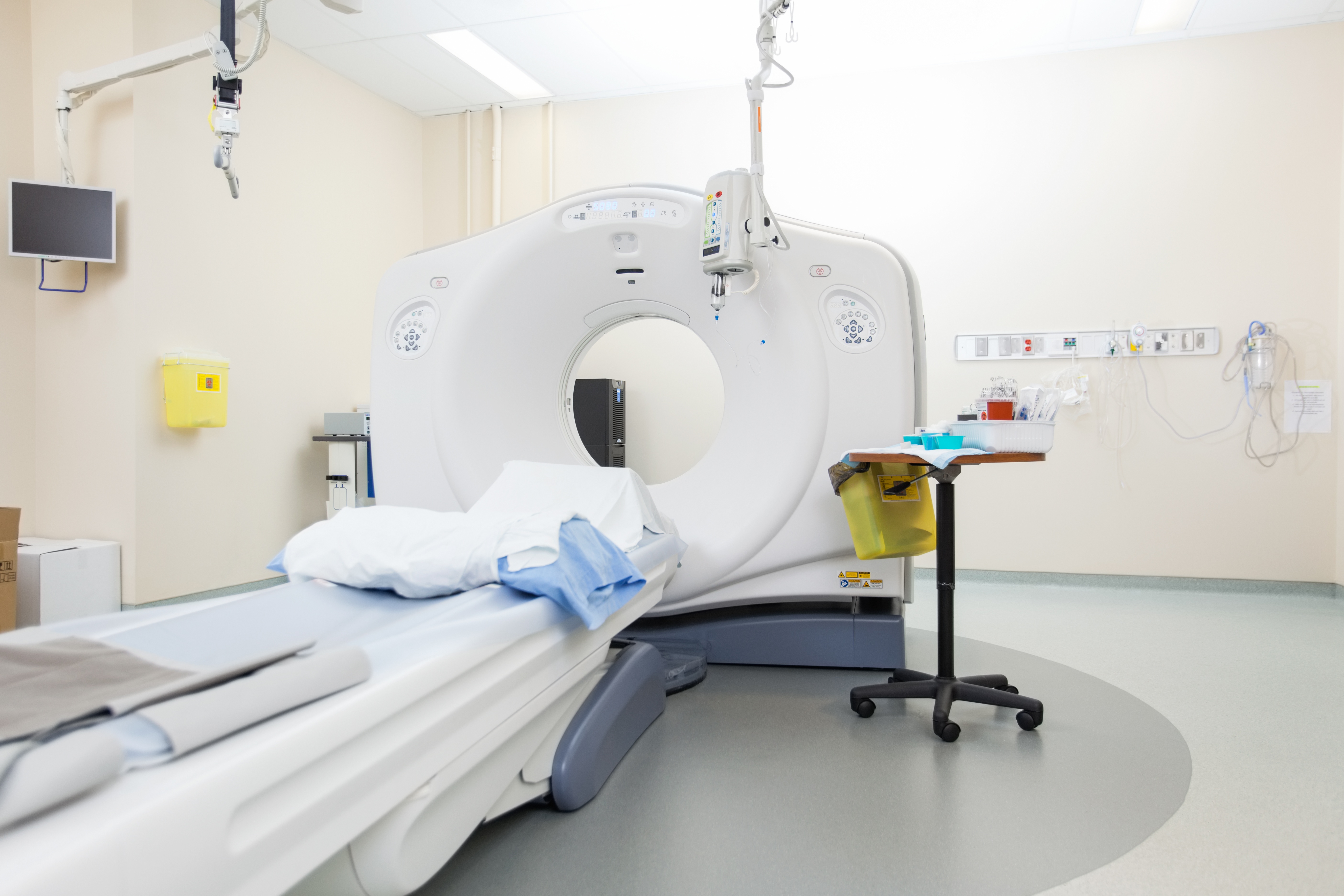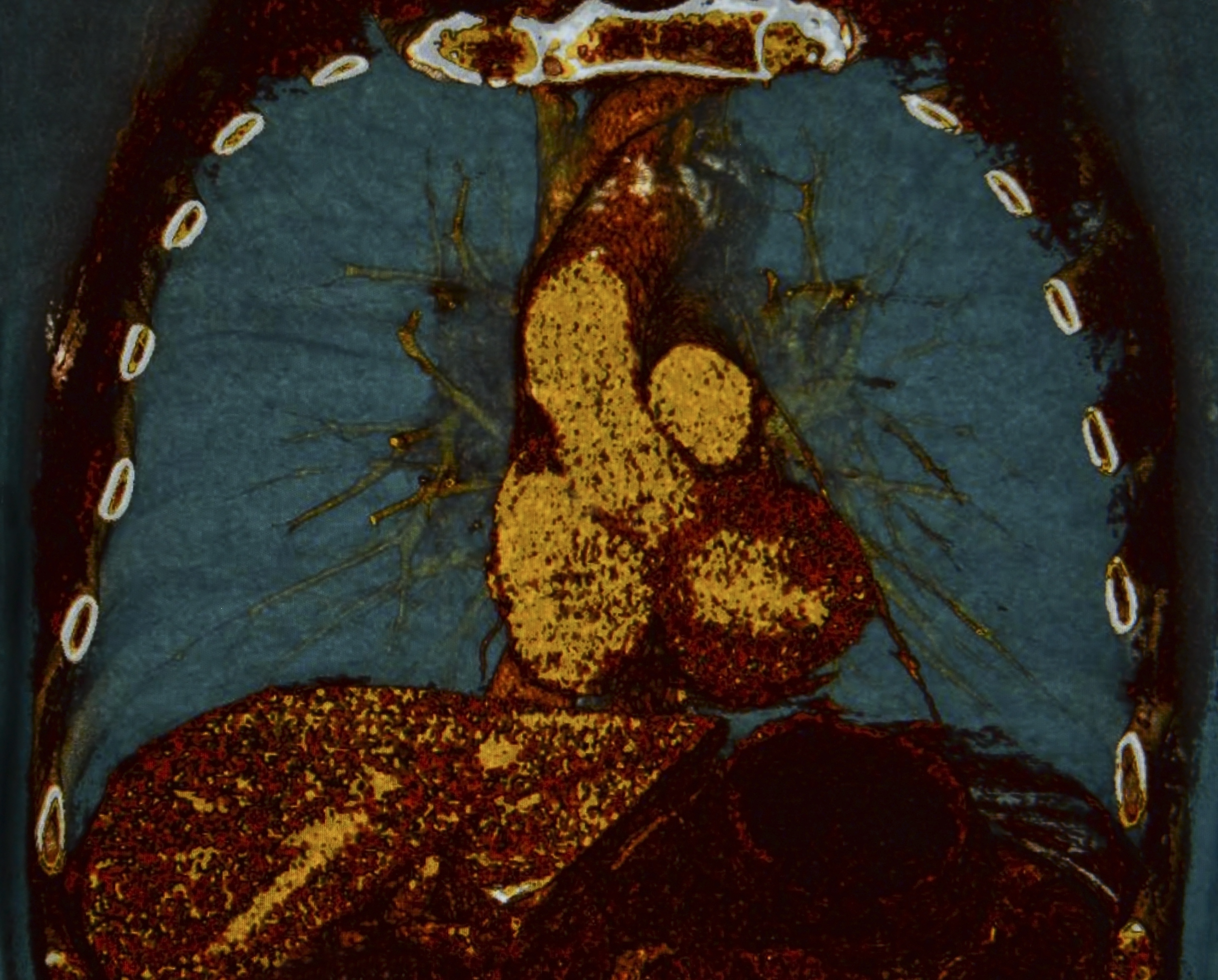.png?width=560&name=NO.2%20GUIDE%20(1).png)
CT scans, or computerized tomography scans are used when x-ray images are either unable to show what the medical staff needs or if there is a more detailed image required.
Though CT scans still use x-ray images, they also used a computer that puts the x-rays together to create a more detailed picture of bones, organs, blood vessels and more.
They are painless procedures and does not take a very long time to complete, the tube you are put into has an x-ray machine that goes around your body to take pictures for a better image.
Medical staff are able to use CT scans on any part of the body to get a more detailed image.
How Do CT Scans Work?
CT scans use a narrow x-ray that circles around the area of your body that needs to be looked at.
Multiple x-ray pictures are taken and then sent to a computer, this computer then compiles the images to create a cross-sectional picture.
Similar to a slice in an entire loaf of bread, the CT scan will compile a few slices until they get the entire image of what they are trying to look at.
These scans get stacked together to make a 3D image, so your medical team can look at your bones, organs and blood vessels to better treat you.
CT scans can help doctors who need to operate on a tumor, for example, and it can allow them to figure out how they want to do the surgery and better prepare for the operation.

How Do I Get a CT Scan?
After your medical team deems it necessary to get a CT scan, they will most likely refer you to a clinic or hospital that can perform one.
When preparing for a CT scan, you may be told not to eat or drink a few hours before the procedure, as well as remove all metal (that you can) from your body, such as jewelry.
You will have to wear a hospital gown, so no part of your clothing can ruin the image from the CT scan.
The technician may also give you contract material, which is safe, to make the image easier to see.
Your medical team will most likely not be in the room with you, but a radiology technician will perform the procedure for you.
You will lay down on the table and the technician will position you how they want to get the best image results.
After you are positioned the technician will go over a few things, so you are not scared or surprised during the procedure.
Once they leave the room, or go to their station, the table will move into the CT machine and begin.
The table will move your body through the machine depending on what part of the body the pictures need to be taken.
The x-ray will be whirling around you, so you will hear a buzzing or whirring noise, but movement can ruin the images, so try to be still no matter what.
The technician can speak to you through the machine and ask you questions or give you instructions throughout the procedure.
The time frame of the procedure all depends on what the image is for and how big of an area it is.
Afterwards
After the procedure is done, you will be asked to put on your normal clothes again, and the technician may keep you at the facility for a short period of time if you took any contract material.
If you have had any contrast material, you may be told to drink a lot of fluid in order to remove the contrast from your body.
You may have a reaction to the contrast material, as people are allergic to the material, which can cause itchiness or a rash.
If you do feel that you are having a reaction to the contrast material, contact your doctor and follow the instructions you are given.
Your doctor may ask if you have any allergies to medications, seafood, or iodine, this will let the doctor know about possible reactions to the contrast material.
They may also ask you if you are on certain medications or have any health conditions, as CT scans may pose a risk to you.
Purpose for Lung Conditions

CT scans may be used for those with unexplained coughs, shortness of breath, chest pain, fevers or other chest symptoms.
It can make it easier for doctors to explain why you are having those symptoms and find a solution for your symptoms.
CT scans are ideal for the lungs because it is noninvasive, fast and accurate, allowing your doctor to diagnose your condition faster and easier.
CT scans for the lungs are very useful because they can produce an image for even the smallest nodule in the lung, which can help diagnose lung cancer early.
Ongoing CT scans used for routine evaluations of a conditions (such as pneumonia, lung disease or tumor evaluation) are often a low-dose scan, lowering the amount of radiation exposure by more than 65 percent.
If you are going to get CT scans regularly, the technician may decide to lower the dose of radiation depending on the medical issue and what information will be gathered from the scan.
CT scans can often help with the diagnosis of a lung disease, such as COPD, pulmonary fibrosis or even lung cancer.
Though these is a small amount of radiation exposure, it can be beneficial to get the procedure done and prevent other, more serious issues.
Speak with your doctor about any concerns, as they can address your questions and help you feel more comfortable with the procedure.
Conclusion
CT scans can be scary if you are never had one, as you have to go into a machine you have never seen before plus it can be very loud and overwhelming.
By educating yourself on the procedure of CT scanning, as well as speaking with your doctor, you can ease your concerns and worries and feel more confident in the procedure.
CT scans are very helpful to doctors to accurately diagnose your condition without having to do any invasive procedure.
They also are very detailed and can help with a diagnosis of COPD or even the beginning stage of lung cancer.



